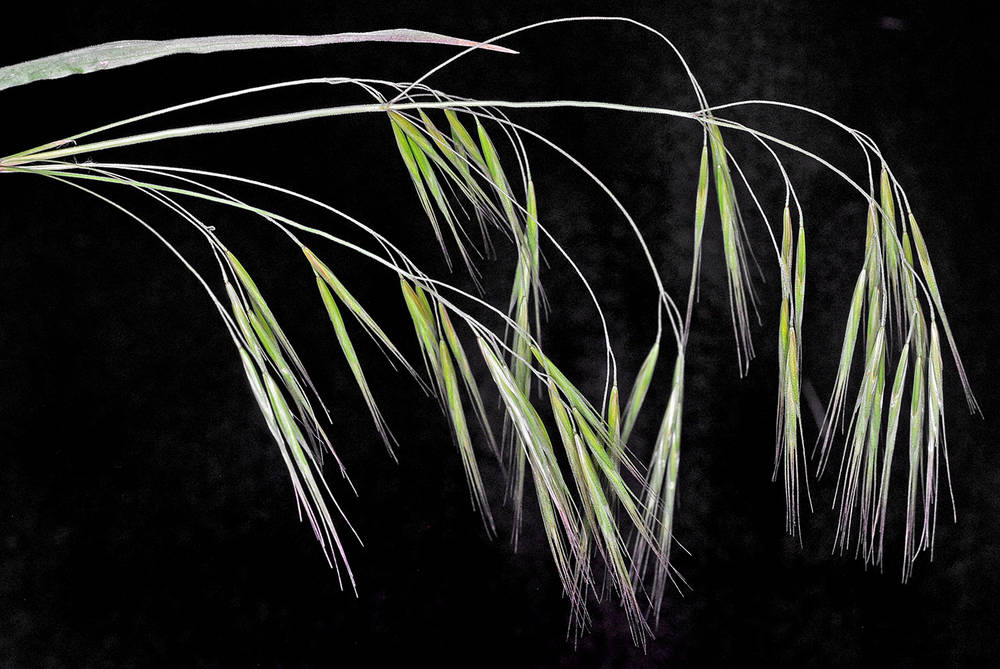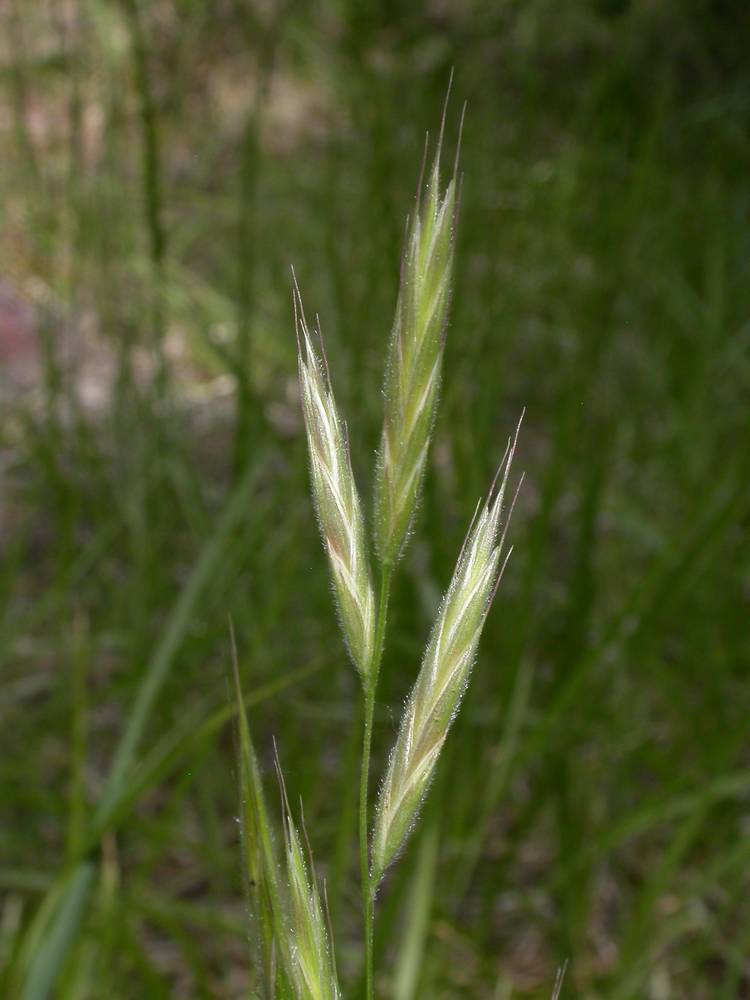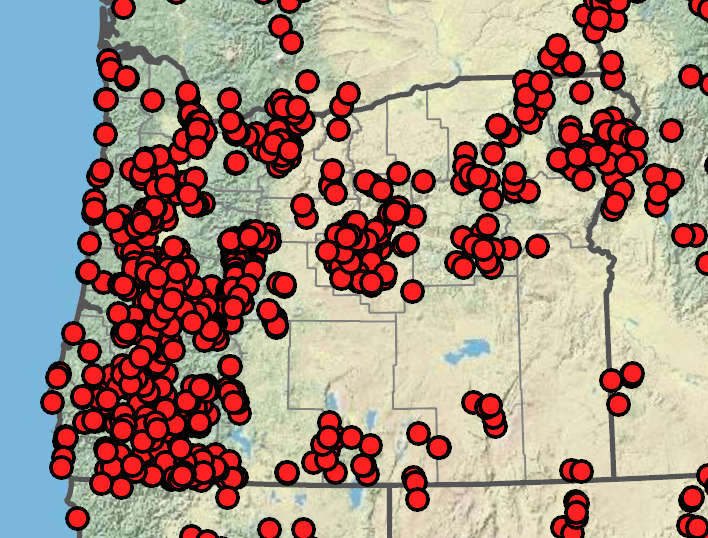Bromus tectorum
Bromus sitchensis var. carinatus
(synonym of Bromus carinatus)
cheatgrass, downy brome, downy chess
California brome
puberulent.
sheaths densely and softly retrorsely pubescent to pilose; upper sheaths sometimes glabrous;
blades 1–16 cm × 1–6 mm, softly hairy on both surfaces.
sheaths mostly glabrous or retrorsely soft pilose;
throats usually hairy;
blades 10–30 cm × 3–5 mm; flat, usually sparsely pilose on both surfaces, sometimes glabrous.
5–20 × 3–8 cm; open, nodding;
branches 1–4 cm, drooping, 1-sided and longer than the spikelets, usually at least 1 branch with 4–8 spikelets.
15–40 cm; lax; open; lower panicle branches usually shorter than 10 cm, 2–4 per node, ascending to strongly divergent or reflexed.
10–20 mm, moderately laterally compressed, not densely crowded, 4–8 florets.
with 6–11 florets.
villous, pubescent, or glabrous;
lower glumes 4–9 mm, 1-veined;
upper glumes 7–13 mm, 3–5-veined.
lower glumes 8–10 mm, 3(5)-veined;
upper glumes 9.5–12 mm, 5(7)-veined.
9–12 mm, lanceolate, glabrous or pubescent to pilose, 5–7-veined;
tips acuminate; hyaline; bifid, with teeth 0.8–2(3)mm, awned;
lemma awns 10–18 mm; straight.
12–16 mm, usually uniformly pubescent, sometimes scabrous, 7-veined;
lemma awns 8–17 mm.
0.5–1 mm.
1–5 mm.
=14.
Bromus tectorum
Bromus sitchensis var. carinatus
Disturbed areas, sagebrush steppe, degraded grasslands, roadsides. 0–2400 m. BR, BW, Casc, Col, CR, ECas, Lava, Owy, Sisk, WV. CA, ID, NV, WA; throughout North America; worldwide. Exotic.
Bromus tectorum is a relatively short grass with drooping inflorescences. Similar B. sterilis and B. diandrus have longer glumes, lemmas, and awns, and spikelets that hang down at a shallower angle than those of B. tectorum. The introduction of B. tectorum to shrub steppe habitats during a time of massive overgrazing in the late 1800s has made restoration of native plant communities difficult or impossible, even where grazing no longer occurs. Fast-growing B. tectorum seedlings outcompete slower growing native grass seedlings for water in drying soils. At maturity, the awns make B. tectorum unpalatable to livestock.
[Originally published in Flora of Oregon as Bromus carinatus var. carinatus.]
Grasslands, savannas, shrublands and forest openings. 0–2300m. Casc, Col, ECas, Est, Lava, Sisk, WV. CA, ID, NV, WA; north to British Columbia, southeast to NM and Baja California. Native.
Bromus sitchensis var. carinatus is distinguished from B. var. marginatus by its longer awns and usually lax panicle branches. It is more common west of the Cascades. In western Oregon, it can be confused with B. sitchensis var. sitchensis, which has broader leaves and more open panicles. Intermediate forms cannot be assigned to either taxon reliably.
Barbara Wilson, Richard Brainerd, Nick Otting
- Local floras:
BC,
CA,
OR,
WA
- Local Web sites:
CalFlora,
CalPhotos,
Flora NW,
PNW Herbaria
WildflowerSearch
iNaturalist (observations)
USDA Plants Database
- LBJ Wildflower Center
- SEINet
- Plants of the World Online
- Encyclopedia of Life
- Wikipedia
- Google Image Search





